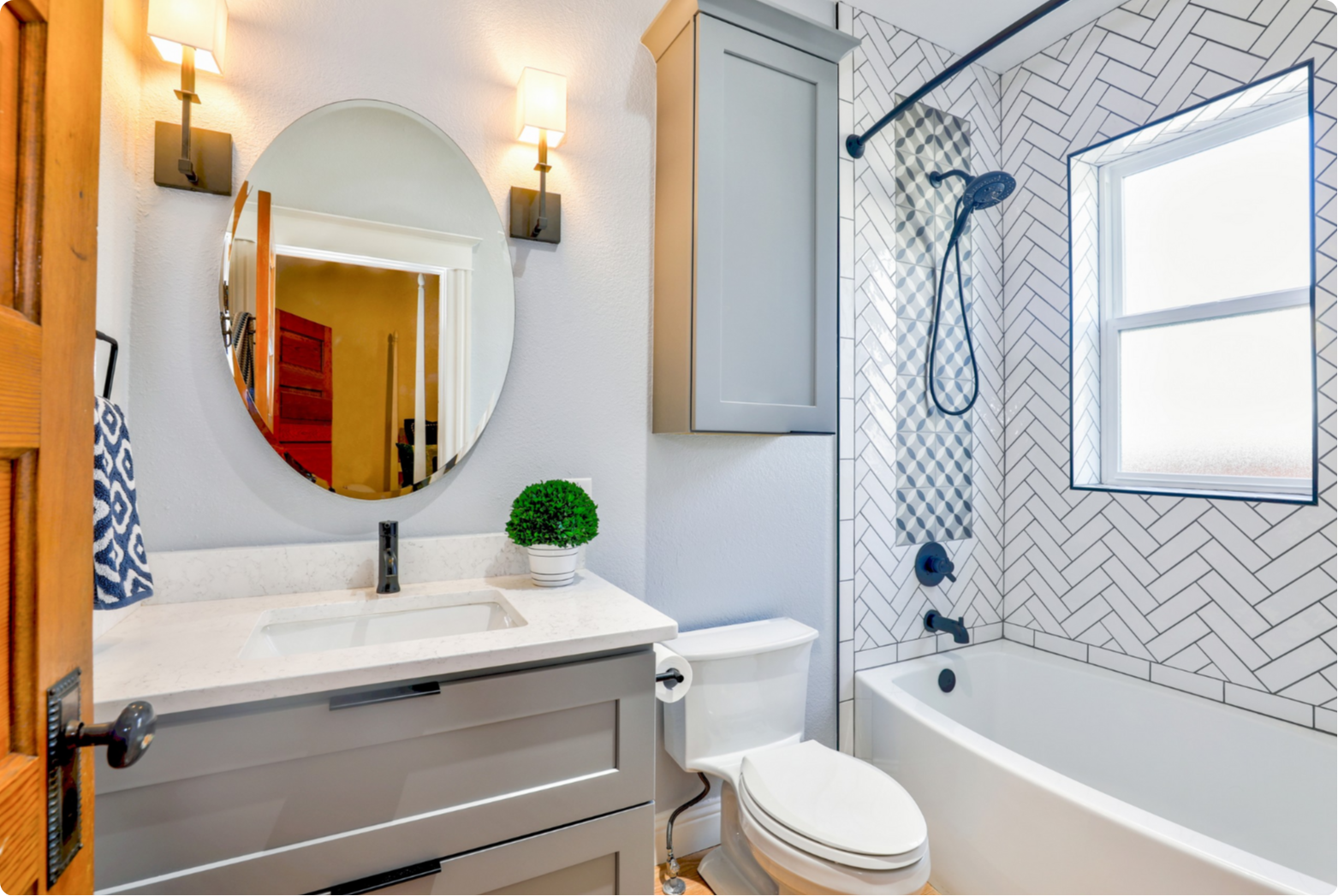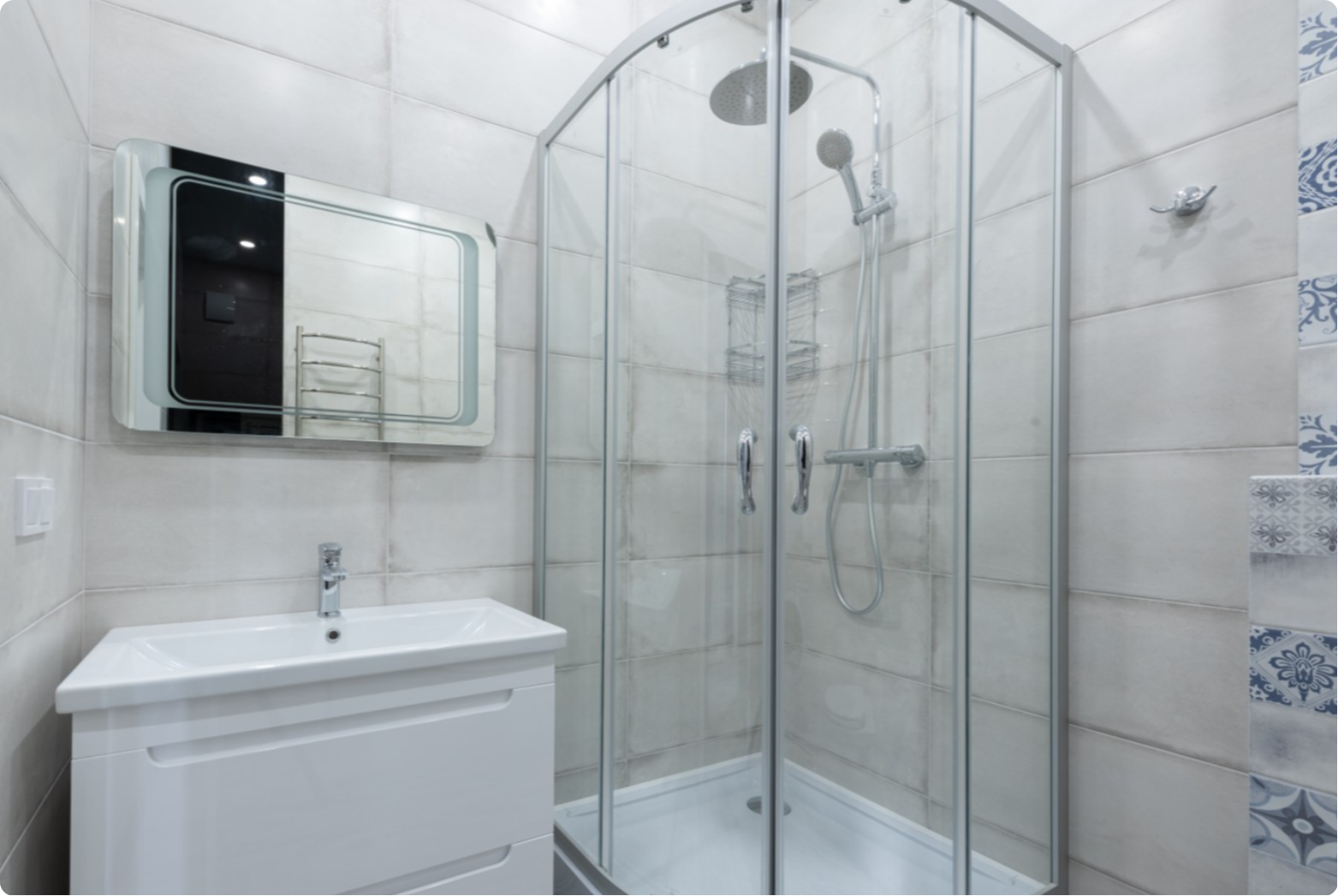Want to find the best extractor fan for your home? Not sure which type to buy or how to install one? Don't fear, this buying guide will answer all your questions and help you make an informed decision.
- What is an extractor fan?
- Types of extractor fans
- Where should I put my extractor fan?
- Bathroom zones
- Installing an extractor fan
- Fan size considerations
- Which extractor fan size is best for my room?
- How to choose the right extractor fan for you
- Shower extractor fans and fan light kits
- Our recommendations of the best extractor fans
What Is an Extractor Fan?
An extractor fan, also known as a ventilation fan, is a mechanical device used to remove excess moisture and odours from indoor spaces. It works by drawing stale or humid air in from the room and expelling it outside. This creates a fresh and clean air flow. These fans are commonly used in bathrooms, kitchens and garages.
Extractor Fans are essential in removing moisture and odours from your kitchen, bathroom, home or office. They work by transferring the air from the room to the outside atmosphere, by the venting system attached. For example, in a bathroom the airflow vents are placed at the top of the room, so the heat which rises will be transferred outside.
Types of Extractor Fans

Axial Extractor Fan:
An axial extractor fan pulls the extracted air through an impeller, and then out through the hole in the external wall. They are the most common extractor fans, and ideal for bathrooms and smaller rooms where ducting of 2-3 metres is required.
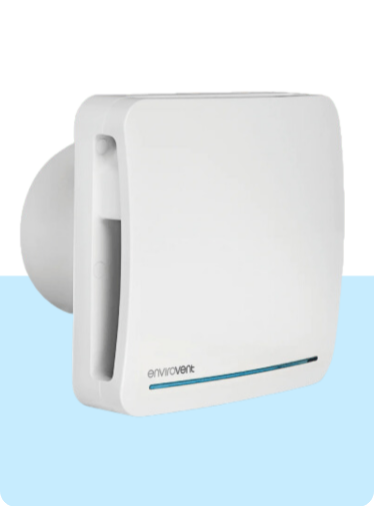
Centrifugal Extractor Fan:
Centrifugal extractor fans extract air at right angles to the fan intake, and then spins the air outwards to the outlet by centrifugal force. They can extract more air and are suitable for rooms with longer ducts.

Inline Extractor Fan:
Inline extractor fans often sit in ceilings above the room. They make a lot less noise and can be used in situations where long ducting is required. They are ideal for rooms without an external wall, or where the noise of your extractor fan is an issue. They can be used to prevent heat loss, as there isn't a need for a hole in an external wall. When using an inline extractor fan, additional items are needed, such as ducting hoses, clamps, and vents. However, the benefits such as noise reduction and adaptability of using an inline fan make the extra effort worthwhile.
Where Should I Put My Extractor Fan?
Find the perfect spot for your extractor fan by identifying the areas in your home that experience the most issues with dampness or odours. The bathroom can become a hotbed of moisture and heat due to daily hot showers. While opening a window may provide a temporary solution, this may not be practical (or economical) during winter. Instead, opt for a more permanent fix by placing your extractor fan on the wall near your bath/shower. This location is known as Zone 1 in the bathroom.
To learn more about Bathroom Zones, read on.
Bathroom Zones
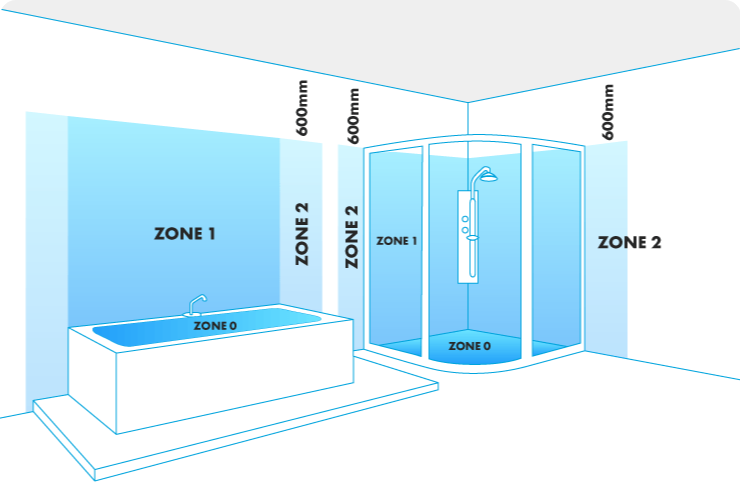
Zone 0 is inside the bath or shower itself. Any fitting used in Zone 0 must be low voltage and be IP67 rated.
Zone 1 is the area above the bath or shower to a height of 2.25 metres from the floor. In this zone, a minimum rating of IP45 is required but IP65 is also accepted.
Zone 2 is the area 0.6 metres away from Zone 1, and to a height of 2.25 metres from the floor. In this zone an IP rating of at least IP44 is required.
Where to install your extractor fan will depend on many factors such as the size of your bathroom, and the layout of your room. It's important to consult a professional electrician when deciding where to place your extractor fan. They will ensure that the fan is installed safely and in compliance with all regulations.
Installing an Extractor Fan
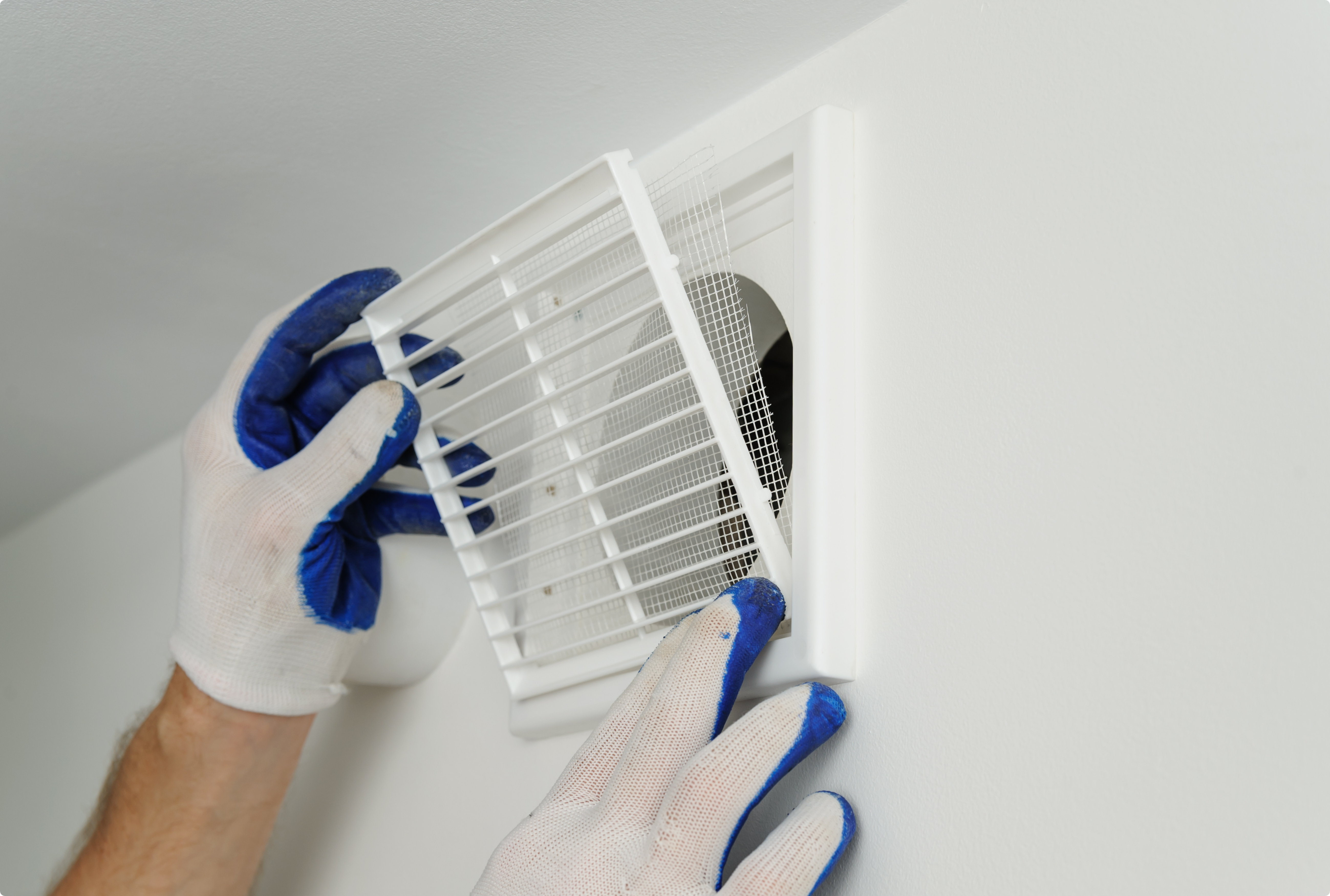
Installing an extractor fan can be a daunting task for some homeowners, but with the help of a professional, it can be relatively straightforward. A professional can ensure that your extractor fan is properly installed in a location that maximizes its effectiveness and is up to local building codes. DIY installation can lead to mistakes that can be costly in both time and money. Hiring a professional saves a headache and ensures that you can confidently enjoy the benefits of fresh air in your home. From reducing moisture levels to eliminating odours, an extractor fan can greatly improve the air quality in your home. So why not leave it to the professionals?
Fan Size Considerations

There are many different fan sizes available to choose from. If you're retrofitting a new extractor fan into an existing hole, the fan size will be the same size. However, if you are designing and renovating a space, here's a handy guide on how room sizes match up to the hole size required:
Firstly, you need to measure the size of your bathroom. Use a tape measure to measure the height, width and length of your bathroom in metres. For example, let’s say your bathroom is 3 metres long, 2.5 metres wide and 2.4 metres high. The volume would be equal to 3 x 2.5 x 2.4 = 24m3. In a bathroom, it is recommended to have a minimum of four air changes an hour. Therefore, your extraction rate would need to be a minimum of 24m3 x 4 = 72m3/h.
However, it is generally a good idea to purchase an extractor fan that is more powerful than you need, as you may not wish to have the extractor fan on continuously over the course of an hour to achieve four air changes. An extractor fan with an airflow of 250m3/h would be ideal for our example bathroom, as you would only need to run the fan for roughly 15 minutes to achieve four airflow changes—roughly the amount of time it takes to have a shower!
Therefore, the extraction rate of your fan is equal to:
Extraction rate: 24m3 x 4 air changes = 96m3/h
Sometimes the extraction rate is also measured in litres per second. If we take 96m3/h x 1000 = 96,000l/h. There’s 3600 seconds in an hour, so we then need to divide l/h by 3600 to get l/s. Which would look like this: 96,000l/h ÷ 3600 = 26l/s.
4-inch fans/100mm: The average extraction rate for 4-inch fans is 85m3/h. These are perfect for smaller rooms around the house, such as en-suite bathrooms and shower rooms
6-inch fans/150mm: The average extraction rate for 6-inch fans is 230m3/h. Ideal for small to medium size rooms with higher moisture extraction needs. You may consider a 6 inch fan if you live in a home with your family or friends. Multiple people sharing one bathroom will require a fan with a higher extraction rate
9-inch fans/230mm: The average extraction rate for 9-inch fans is 668m3/h. Ideal for larger rooms with several people. Suitable for offices, and commercial premises
12-inch fans/300mm: The average extraction rate for 12-inch fans is 1100m3/h. Ideal for larger rooms, with high demand from customers in one space such as restaurants, offices, bars, cafés and gyms
Which Extractor Fan Size Is Best For My Room?
How to Choose the Right Extractor Fan for You
Hole Size Consideration
The size of the hole in the wall is normally out of your hands when you are replacing an existing fan. It is important to ensure your desired fan is compatible to avoid extra installation costs and stress.
How to Turn the Fan On
You have multiple options to turn a fan on. A fan can be switched on manually by a pullcord. A fan can also be switched on by a PIR sensor, which detects movement every time you walk into the room. A third option is a humidistat sensor, which switches on after reading the humidity level has risen above the limit or detects odour and will switch off once the humidity is normal again and the odour is gone.

Noise Levels
If you wish to buy a quiet extractor fan, please check the noise level to ensure this won't be an issue for your property. Typically, axial extractor fans have noise levels ranging from 35 - 45 dB, while centrifugal extractor fans have noise levels between 40 - 55 dB. Our collection of extractor fans has noise levels between 14 - 50 dB. All extractor fans are measured with a standard test of decibels recorded 3 metres away. This is an important factor to keep in mind when checking specifications.

Is a heat recovery option required?
Heat recovery is usually an option for whole-house ventilation systems, where moisture is extracted from the bathroom, kitchen and utility rooms, and passed through a heat exchange. Fresh air is brought in from the outside environment, passes through the heat exchange, and recycles most of the heat without any additional cost. This provides both greater climate control and running cost efficiencies.

Timer
A timer is an essential feature in extractor fans, as it helps to save energy and maintain good air quality. It allows you to set specific times for the fan to turn on and off, ensuring that it only runs when needed. This can also help with reducing noise levels during night-time hours. Some timers even have adjustable settings for different days of the week.

Humidistat
Like a timer, a humidistat allows the fan to automatically turn on and off based on humidity levels in the room. This is ideal for areas prone to high moisture levels like bathrooms or utility rooms.
Shower Extractor Fans and Fan Light Kits
Shower Fan light kits are packs which contain all you will need to install an extractor fan in the ceiling above your shower. The kits include the shower light, inline fan, outdoor grille, flexible ducting, the clips and connectors you'll need. Usually, the shower is the main source of excess moisture in your bathroom. The Fan light kit will help reduce the excess moisture. Our range of shower extractor fan kits includes premium features, such as variable overrun timers giving you complete control.
Our Recommendations of the Best Extractor Fans
Inline Extractor Fans
Manrose MF100T 4"/100mm In-Line Mixed Flow Extractor Fan with Timer
If you are in the market for a highly efficient and easy-to-use extractor fan, the Manrose MF100T 4"/100mm In-Line Mixed Flow Extractor Fan with Timer could be just what you need. With its built-in electronic timer, which is adjustable up to 20 minutes, you can have peace of mind knowing that the fan will turn off automatically. Not only is it functional, but it is also compact with overall dimensions that make it very easy to install, whether inside or outside your home.
Vent-Axia ACM100T 4"/100mm Inline Mixed Flow Fan With Timer White - 17104020
The Vent-Axia ACM100T 4"/100mm Inline Mixed Flow Fan With Timer White is an impressive piece of equipment designed to meet IP44 standards. Its rotating motor chassis assembly ensures that air can be extracted or supplied with maximum efficiency, making it one of the most effective fans on the market. But it's not just about functionality - this fan is aesthetically pleasing too, with a wipe-clean finish that ensures it looks great wherever it's installed.
Axial Extractor Fans
EnviroVent Silent 100 Ultra Quiet WC & Bathroom Extractor Fan With Timer - SIL100T
The EnviroVent Silent 100 Ultra Quiet WC & Bathroom Extractor Fan With Timer is a must-have for anyone looking for a bathroom fan that lives up to its name. With its quiet operation and backdraft shutter, you won't even know it's running. In addition, the adjustable run-on time ensures that it continues to remove moisture from your bathroom even after you've left the room. This fan is suitable for wall or ceiling mount, making it incredibly versatile.
Manrose XF100S 100mm/4inch. Standard Axial Wall/Ceiling Fan
The Manrose XF100S 100mm/4inch. Standard Axial Wall/Ceiling Fan is the perfect addition to any home or office space seeking ventilation solutions. Designed for mounting on walls, ceilings, or even windows, this versatile fan can provide efficient and effective airflow no matter where it's placed. And don't let the utility of this fan fool you - it's also impressively quiet, perfect for use in any setting without disturbing those around it. With a 100mm (4") series that has an impressive impact despite its small size.
Centrifugal Extractor Fans
Manrose CF100H 100mm 4inch Centrifugal Extractor Fan
The Manrose CF100H 100mm 4inch Centrifugal Extractor Fan is a powerful and efficient solution for managing excess moisture and unpleasant odours in your home. With an impressive extract rate of 90m3/hr, which equates to 25 l/S, this fan is capable of quickly and effectively removing humidity from your bathroom, kitchen, or other enclosed space. But what sets the CF100 apart from other extractor fans is its built-in humidistat, which automatically switches the unit on and off based on the ambient humidity of the room. This intelligent feature ensures that your space stays fresh and dry, without you having to constantly monitor and adjust the fan settings.
Xpelair Premier 4"/100mm Centrifugal Condensation Control Extractor Fan With Timer & Humidistat- 067326 - CF20TX
The Xpelair Premier 4"/100mm Centrifugal Condensation Control Extractor Fan With Timer & Humidistat is a must-have for any household that values functionality and modernity. With its integral run-on timer, humidistat, and pullcord to boost the fan as required, it's easy to maintain the perfect level of humidity in your home or workspace. What's more, the fan is powered by a low watt brushless DC motor, making it an energy-efficient option that won't break the bank.
Check out our other articles:









 Drying Clothes Dehumidifiers
Drying Clothes Dehumidifiers
 Low Energy Dehumidifiers
Low Energy Dehumidifiers
 Commercial Dehumidifiers
Commercial Dehumidifiers
 Dehumidifier Accessories
Dehumidifier Accessories
 Humidifiers & Air Purifiers
Humidifiers & Air Purifiers
 Inline Fans
Inline Fans
 Kitchen Extractor Fans
Kitchen Extractor Fans
 Bathroom Extractor Fans
Bathroom Extractor Fans
 Commercial Extractor Fans
Commercial Extractor Fans
 Shower Extractor Fans
Shower Extractor Fans
 Silent Extractor Fans
Silent Extractor Fans
 Heat Recovery Extractor Fans
Heat Recovery Extractor Fans
 PIV & Whole House Ventilation
PIV & Whole House Ventilation
 Extractor Fan Accessories
Extractor Fan Accessories
 Extractor Fan Controllers
Extractor Fan Controllers
 Panel Heaters
Panel Heaters
 Fan Heaters
Fan Heaters
 Patio Heaters
Patio Heaters
 Storage Heaters
Storage Heaters
 Towel Rails
Towel Rails
 Underfloor Heating
Underfloor Heating



 Time Controllers
Time Controllers
 Portable Air Conditioners
Portable Air Conditioners
 Air Coolers
Air Coolers
 Wall Mounted Air Conditioning Units
Wall Mounted Air Conditioning Units
 Commercial Cooling
Commercial Cooling
 Ceiling Cassette Air Conditioning
Ceiling Cassette Air Conditioning
 Desk Fans
Desk Fans
 Pedestal Fans
Pedestal Fans
 Floor Fans
Floor Fans
 Tower Fans
Tower Fans
 DC Fans
DC Fans
 Air Circulators
Air Circulators
 Ducting Kits
Ducting Kits
 Internal Grilles
Internal Grilles
 External Grilles
External Grilles
 Ducting Hose
Ducting Hose
 Ducting Clamps
Ducting Clamps
 Ducting Connectors
Ducting Connectors
 Compressor Dehumidifiers
Compressor Dehumidifiers
 Desiccant Dehumidifiers
Desiccant Dehumidifiers
 Electric Radiators
Electric Radiators
 Oil Filled Radiators
Oil Filled Radiators
 Oil Free Radiators
Oil Free Radiators
 Under Sink Water Heaters
Under Sink Water Heaters
 Over Sink Water Heaters
Over Sink Water Heaters
 Unvented Water Heaters
Unvented Water Heaters
 Instant Water Heaters
Instant Water Heaters
 Hand Wash Units
Hand Wash Units
 Air Curtains
Air Curtains

